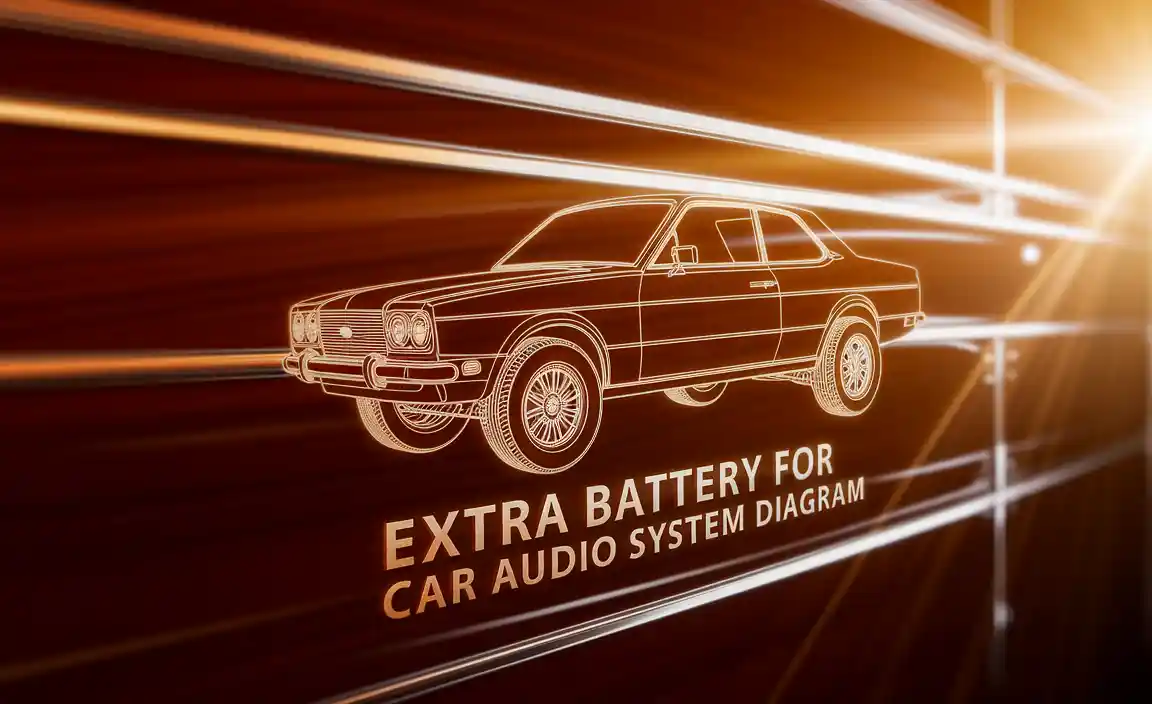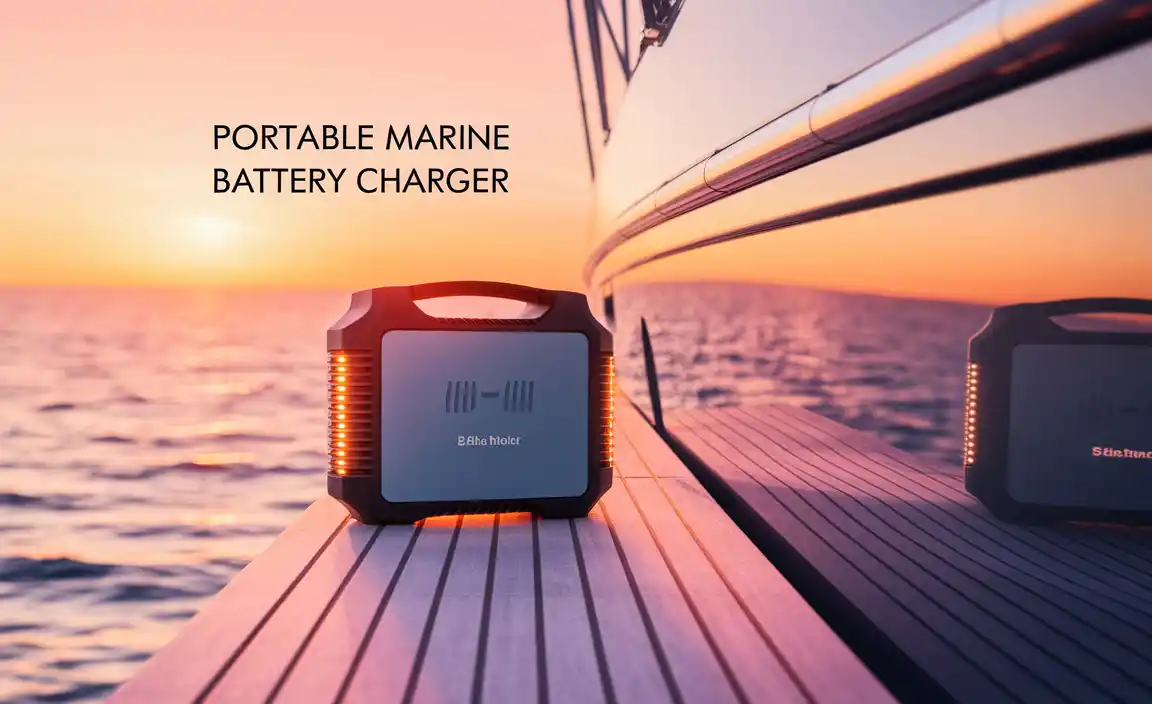Solid State Battery EVs are here, offering a safer, faster-charging, and longer-lasting future for electric vehicles. This revolutionary technology promises to overcome current EV limitations, making electric driving more practical and appealing for everyone. Get ready for a power-packed change!
Thinking about electric cars can bring up lots of questions, especially about how they work and how long they’ll last. One big worry for many is the battery – how far can it take you, how long does it take to charge, and is it safe? For a long time, electric vehicle batteries have been a bit of a puzzle, with trade-offs that made people hesitate. But imagine a battery that charges super fast, lasts much longer, and is much safer. That’s exactly what we’re starting to see with solid-state batteries. They’re not just an upgrade; they’re a whole new way of powering our cars, and they’re set to make EV ownership easier and more exciting for everyone.
This guide will break down what solid-state batteries are all about in simple terms. We’ll explore how they work, why they’re such a big deal, and what they mean for the future of electric cars. You’ll learn why this technology is considered a proven power revolution, making EVs a more compelling choice than ever before.
What Exactly is a Solid State Battery?
You know how most batteries today, like the ones in your phone or electric car, use a liquid or gel to move electricity around? Think of it like a bridge that helps tiny charged bits, called ions, travel from one side of the battery to the other. This liquid or gel is called an electrolyte.
A solid-state battery does the same job but uses a special solid material instead of that liquid or gel. This solid electrolyte is the key difference. It’s like replacing a wobbly wooden bridge with a super strong, solid concrete one. This change might sound small, but it opens up a world of benefits for how batteries work.
How Do They Work Differently?
In a regular lithium-ion battery (the most common type in EVs today), the liquid electrolyte allows lithium ions to move between the positive part (cathode) and the negative part (anode) when you charge or discharge the battery. While this works, the liquid can have some drawbacks. It can sometimes cause issues like overheating or even catching fire if the battery is damaged or overcharged, although this is rare. It also limits how quickly you can push those ions around, which affects charging speed.
A solid-state battery replaces this liquid with a solid material. This solid material also conducts ions, but it does so in a more controlled and stable way. Because it’s solid, it’s less likely to break down or react negatively. This solid structure also allows for potentially thicker anodes, which can store more energy, leading to longer driving ranges. Plus, the solid nature means it’s much harder for problems like short circuits to occur, making them inherently safer.
Key Components of a Solid State Battery
Just like any battery, a solid-state battery has a few main parts that work together:
- Anode: This is the negative electrode. In solid-state batteries, researchers are experimenting with using pure lithium metal for the anode. This can hold a lot more energy than the graphite used in many current lithium-ion batteries.
- Cathode: This is the positive electrode. Like in current batteries, it contains materials that release lithium ions when discharging.
- Solid Electrolyte: This is the star of the show! It’s a solid material that lets lithium ions pass through but keeps the anode and cathode from touching directly. Common types being explored include ceramics, polymers, and sulfides.
Why Are Solid State Batteries a Game Changer for EVs?
The reason solid-state batteries are creating so much buzz is their potential to solve many of the challenges that current electric vehicles face. They offer a significant leap forward in performance, safety, and design.
1. Enhanced Safety
Safety is a top priority for any car, and batteries are a big part of that. In traditional lithium-ion batteries, the liquid electrolyte is flammable. If the battery gets damaged or overheats, there’s a small risk of the liquid electrolyte causing a fire. Solid-state batteries use a non-flammable solid material, which dramatically reduces this risk. They are much more stable, even at higher temperatures, offering peace of mind for drivers.
For drivers accustomed to the robust safety standards of gasoline cars, this inherent safety feature of solid-state batteries removes a perceived barrier to EV adoption. It’s like having a car that’s built with an added layer of protection.
2. Increased Energy Density and Longer Range
“Energy density” is a fancy term for how much energy a battery can store in a given space or weight. Solid-state batteries have the potential for much higher energy density. This means they can pack more power into the same size battery, or they can be made smaller and lighter while holding the same amount of energy.
For electric cars, this translates directly into longer driving ranges. Imagine an EV that can go 500 miles or even more on a single charge, similar to or exceeding many gasoline cars! This eliminates “range anxiety,” the worry that your car will run out of power before you reach a charging station.
3. Faster Charging Times
One of the biggest frustrations with current EVs is charging time. While fast chargers are improving, they still take longer than filling up a gas tank. Solid-state batteries could revolutionize this. Because the solid electrolyte is more stable and can allow for faster ion movement, charging could become much quicker. We’re talking about potentially charging an EV in 10-15 minutes, similar to a quick gas station stop.
This rapid charging capability makes owning an EV far more convenient for daily life and long road trips. It means less waiting and more driving.
4. Longer Battery Lifespan
Batteries don’t last forever; they degrade over time with each charge and discharge cycle. Solid-state batteries are expected to have a longer lifespan. The stable solid electrolyte is less prone to the internal degradation that can occur in liquid electrolytes. This means EVs could require battery replacements less often, potentially saving owners significant money over the life of the vehicle.
A longer-lasting battery also means a more sustainable EV. Fewer battery replacements mean less mining for raw materials and less waste, contributing to the environmental benefits of electric transportation.
5. Design Flexibility
The solid nature of these batteries could also allow for more flexible battery designs. They might be thinner, more adaptable to different shapes, and easier to integrate into the structure of a car. This could lead to more creative and efficient vehicle designs, perhaps even enabling smaller, more affordable EVs or larger vehicles with even greater range.
The Technology Behind the Revolution
The development of solid-state batteries isn’t a single breakthrough but an ongoing effort involving diverse materials and approaches. Researchers are exploring several types of solid electrolytes, each with its own strengths and challenges. Understanding these can give you a clearer picture of the innovation happening.
Types of Solid Electrolytes
The heart of a solid-state battery is its solid electrolyte. Here are some of the main types being developed:
- Oxide Ceramics: These are hard, brittle materials often based on lithium, lanthanum, and zirconium oxides. They are very stable and have good ionic conductivity, but they can be challenging to manufacture and can crack if not handled carefully. Example materials include LLZO (Lithium Lanthanum Zirconate Oxide).
- Sulfide Ceramics: Materials like Li₂S-P₂S₅ (lithium thiophosphate) and Argyrodite (Li₆PS₅Cl) are known for having excellent conductivity – sometimes even better than liquid electrolytes. However, they can sometimes react with air and moisture, requiring careful manufacturing processes.
- Polymer Electrolytes: These are flexible plastic-like materials. They are easier to work with and can be manufactured into thin films. While they are generally safer and more durable, their conductivity is typically lower than ceramic electrolytes, especially at room temperature.
- Composite Electrolytes: These combine different materials, like ceramic particles within a polymer matrix, to try and achieve the best properties from each type – the conductivity of ceramics with the flexibility of polymers.
The Challenge of Manufacturing
While the science behind solid-state batteries is exciting, scaling up production from lab prototypes to mass manufacturing for cars is a significant hurdle. Traditional battery manufacturing relies on well-established processes. Solid-state electrolytes often require high temperatures or specific atmospheric conditions for manufacturing, which can increase costs. Companies are investing heavily in new manufacturing techniques to overcome these obstacles.
The automotive industry is working closely with battery developers. Many major car manufacturers are partnering with or investing in these battery startups to secure access to the technology and help drive down production costs. It’s a complex, industry-wide effort.
Examples of Companies Leading the Way
Several companies are at the forefront of solid-state battery development:
- Toyota: A long-time leader in hybrid technology, Toyota has been investing heavily in solid-state battery research for years and has patented numerous designs. They aim to integrate them into their EVs in the near future.
- QuantumScape: This Silicon Valley startup is backed by major players like Volkswagen and Bill Gates. They are known for their advanced solid electrolyte technology and aim to reach mass production soon.
- Solid Power: Another prominent company, Solid Power is collaborating with Ford and BMW. They are developing both sulfide and oxide solid-state battery technologies.
- Samsung SDI: A major battery supplier, Samsung SDI is also pursuing solid-state battery development, aiming for early commercialization for various applications, including EVs.
These companies, among others, are pushing the boundaries, and their progress signals that solid-state batteries are moving from theoretical possibility to practical reality.
When Will We See Solid State EVs on the Road?
This is the million-dollar question! For a while, many experts predicted solid-state EVs would be here very soon. However, the reality of developing and manufacturing such a new technology means it’s taking time. It’s less about a single year and more about a phased rollout.
Initially, we might see solid-state batteries in smaller applications or in more niche, high-end electric vehicles. Car manufacturers are cautiously optimistic. While some had hoped for widespread adoption by now, the timelines have shifted. Most industry forecasts suggest that significant numbers of solid-state EVs will start appearing in the market in the latter half of the 2020s and into the early 2030s. This phased approach allows for refining the technology and scaling up production reliably.
What’s Holding Up Mass Adoption?
Several factors are still at play:
- Cost: Currently, solid-state battery production is expensive. Developing cost-effective manufacturing processes is key to making EVs affordable for everyone.
- Durability and Cycle Life: While promising, proving the long-term durability of these batteries in real-world driving conditions with millions of cycles is ongoing.
- Performance at Extreme Temperatures: Ensuring consistent performance in very hot or very cold weather is also an area of active research.
- Supply Chain Development: New materials and manufacturing processes require building entirely new supply chains, which takes time and investment.
Are Solid State Batteries a Direct Replacement for Car Batteries?
Yes, the ultimate goal is for solid-state batteries to directly replace the lithium-ion batteries used in electric vehicles today. They are designed to serve the same function – storing electrical energy and delivering it to power the car’s motor. However, because solid-state batteries are expected to offer significant improvements in safety, energy density, and charging speed, they will represent a major upgrade, not just a simple swap.
Think of it like the transition from early mobile phones to smartphones. Both made calls, but the smartphone offered so much more functionality and a vastly improved user experience. Solid-state batteries will offer a similar generational leap for EVs.
Impact on Existing EVs
It’s important to note that solid-state batteries are not a retro-fit solution for current electric vehicles. EVs sold today are designed specifically for the lithium-ion battery packs they use. When solid-state technology becomes commercially available, it will be integrated into new EV models designed from the ground up to take advantage of its unique properties.
Comparison: Solid State vs. Current Lithium-Ion EV Batteries
To truly understand the impact, let’s compare the two side-by-side. This table highlights the key differences that make solid-state batteries so exciting for the future of electric mobility.
| Feature | Current Lithium-Ion Battery | Solid State Battery |
|---|---|---|
| Electrolyte | Liquid or gel (flammable) | Solid (non-flammable) |
| Safety | Generally safe, but risk of thermal runaway (rare) | Inherently safer, significantly reduced fire risk |
| Energy Density | Good, but room for improvement | Potentially much higher (more range, lighter weight) |
| Charging Speed | Improving, but can be slow (20-60+ minutes for fast charging) | Potentially much faster (e.g., 10-15 minutes) |
| Lifespan | Good, but degrades over time | Potentially longer lifespan and fewer degradation issues |
| Cost to Manufacture | Mature, relatively lower cost | Currently high, but expected to decrease with scale |
| Design Flexibility | Standardized, often bulky | More flexible, potentially thinner and adaptable shapes |
What About Other Battery Applications?
While electric cars are the most prominent application driving solid-state battery development, the technology has the potential to revolutionize many other areas where batteries are used:
- Consumer Electronics: Imagine smartphones, laptops, and wearables that charge in minutes, last for days, and are much safer, even if accidentally punctured or bent. Solid-state batteries could make these devices more robust and efficient.
- Medical Devices: Implantable medical devices, like pacemakers, require reliable, long-lasting, and safe power sources. Solid-state batteries could provide enhanced safety and operational longevity for these critical applications.
- Aerospace: The lighter weight and higher energy density of solid-state batteries could be a significant advantage in aerospace, enabling longer flight times for drones and potentially smaller, more efficient aircraft.
- Grid Storage: While lithium-ion batteries are currently used for grid storage, future generations of solid-state batteries could offer more efficient and safer ways to store renewable energy from solar and wind farms.
Essentially, anywhere a battery is used, solid-state technology offers the promise of improvements in safety, performance, and longevity. This makes its development a significant advancement for energy storage across the board.
Frequently Asked Questions About Solid State Batteries
Here are some common questions about this exciting new technology:
Q1: Are solid state batteries already available in electric cars?
A: Not yet widely available for consumer purchase. While some prototypes and limited production runs are emerging, mass-market adoption for electric vehicles is still expected in the coming years, likely starting in the late 2020s.
Q2: Are solid state batteries more expensive than current EV batteries?
A: Currently, yes, the manufacturing processes are more complex and costly. However, as production scales up and technology improves, the cost is expected to decrease significantly, eventually becoming competitive with or even cheaper than current lithium-ion batteries.
Q3: Will solid state batteries make my current EV better?
A: No, solid-state batteries are not designed as a retro-fit for existing EVs. They will be integrated into brand-new vehicle models designed specifically to utilize their technology.
Q4: How much longer will my car run with a solid state battery?
A: The goal is significantly longer range. Depending on the battery design and vehicle, it could mean an increase of 50% to 100% more range compared to current EVs with similar-sized battery packs, potentially pushing ranges well over 500 miles.
Q5: Is it safe to charge a solid state battery in my home?
A: Yes, solid-state batteries are inherently safer. Their non-flammable nature means they pose a much lower risk of overheating or fire compared to liquid electrolyte batteries, making home charging even more secure.
Q6: What is the main advantage of solid state batteries for consumers?
A: The biggest advantages for consumers are expected to be faster charging times – comparable to fueling a gasoline car – and longer driving ranges, effectively eliminating range anxiety and making EV ownership much more convenient.
Q7: Are solid state batteries better for the environment?
A: Yes, potentially. Their longer lifespan means fewer batteries will need to be manufactured and disposed of over time. Also, some solid-state designs may use less scarce or problematic materials, further enhancing their environmental benefits.
Conclusion: A Brighter, Cleaner Future on Wheels
<




